A substantial French bronze mantel clock: rectangular plinth with applied musical trophy, a rocky mound framing the dial, and an accomplished figure of Hermes/Mercury seated above. The god is identified by his caduceus, winged cap (petasos) and winged sandals (talaria)—canonical attributes in Classical art linking him to swift messaging, travel and commerce.
Materials & WorkmanshipFinely chased bronze with olive-brown patina for the figure, contrasted by richly fire-gilt bronze mounts for the rocky base, dial surround, rooster, trophy and highlights (wings, ankle band). The finish shows the visual hallmarks of early-19th-century mercury gilding (ormolu), with matte grounds and burnished accents.
Dial & IconographyRound dial with silvered Roman chapter ring and a guilloché gilt center; the bezel is cast as a snake biting its tail—the ouroboros, widely read as a sign of eternity and the cyclical nature of time, a fitting conceit for clocks.
At the left stands a rooster, an occasional attribute of Hermes and a broader emblem of dawn and watchfulness; in France it also resonates with the national symbol, the Gallic rooster.
The plinth bears an applied musical trophy centered by a lyre, a neoclassical motif frequently encountered on Restoration/Charles X figurative clocks with prominent sculptural groups.
Scale, casting quality, mercury gilding and mythological subject correspond to Paris production of the Charles X / early Louis-Philippe decades, circa 1830–1840.
MovementFrench mouvement de Paris with bell striking visible to the rear; two winding squares (time/strike) and Breguet-type hands. (Working condition not assessed at listing time; sold as seen.)
ConditionOriginal gilding well preserved with light age wear; olive patina to the figure in very good state; sharply chased facial features, fingers and toes. Minor marks consistent with age.
DimensionsHeight: 66 cm
Width: 41 cm
Depth: 20 cm



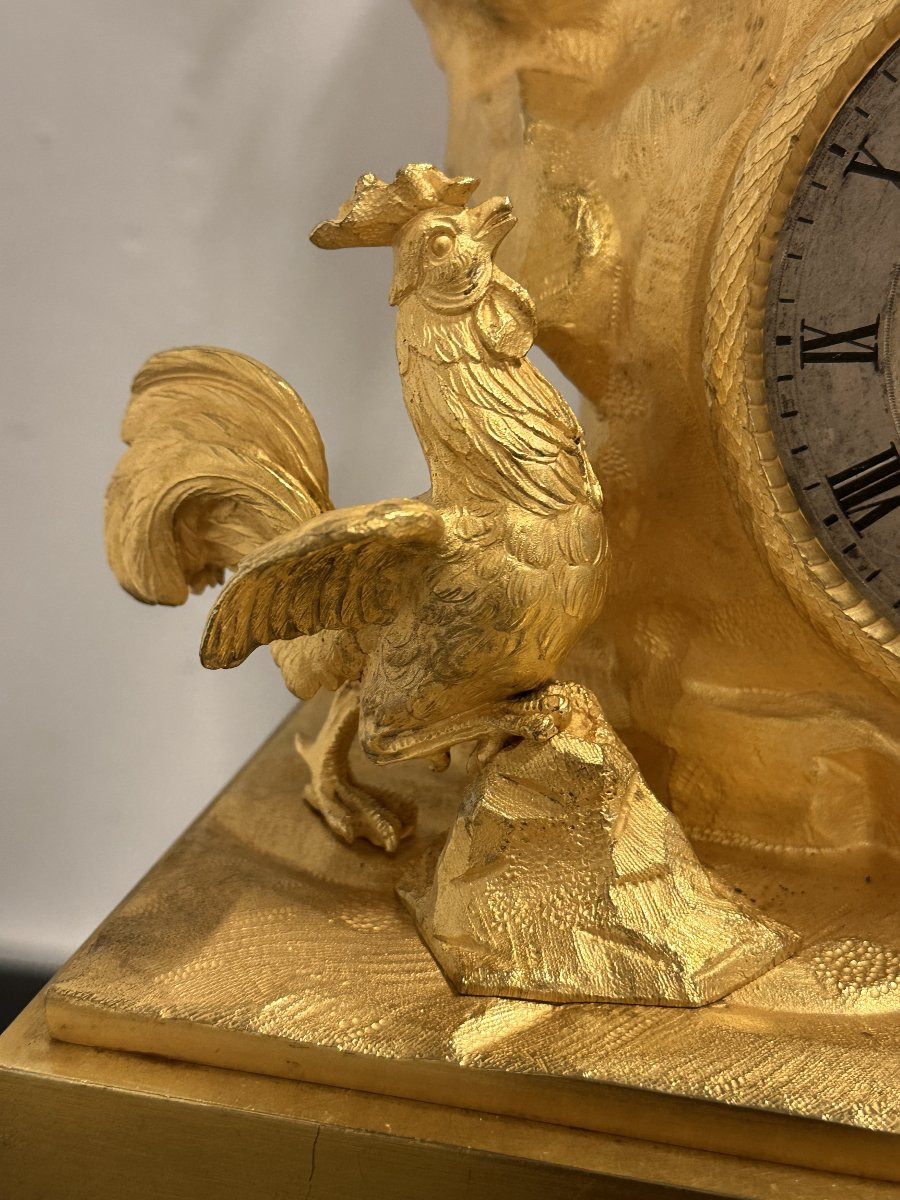
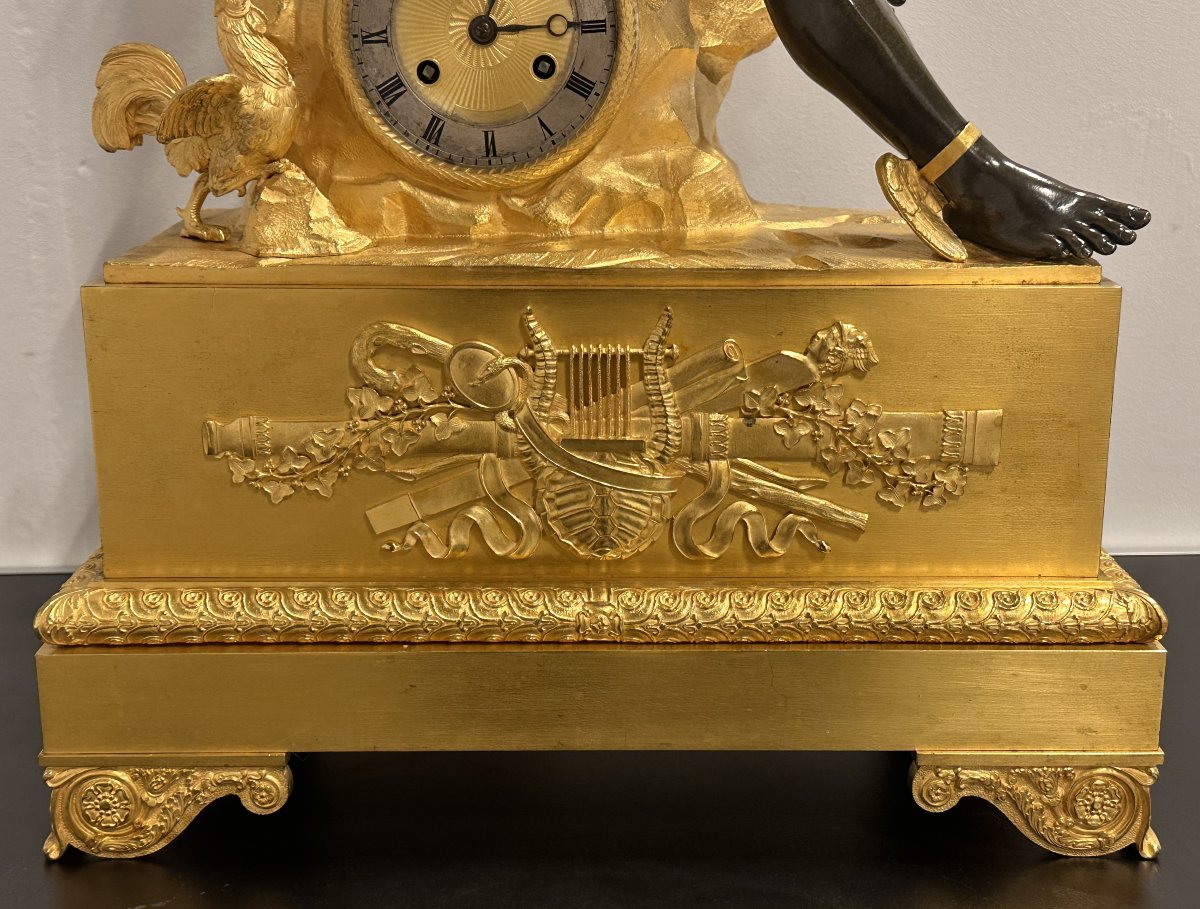























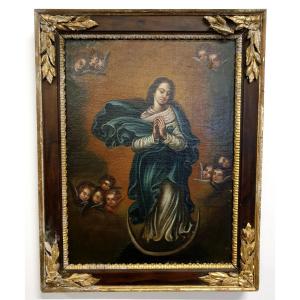



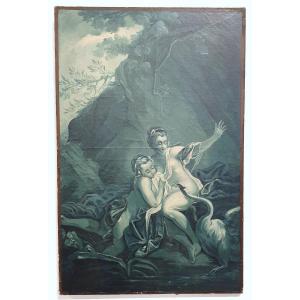







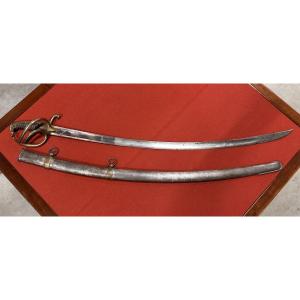
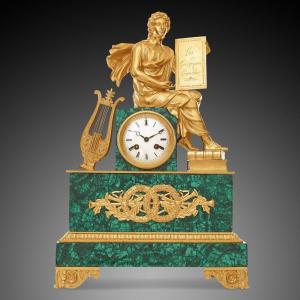

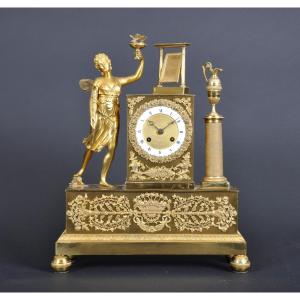





 Le Magazine de PROANTIC
Le Magazine de PROANTIC TRÉSORS Magazine
TRÉSORS Magazine Rivista Artiquariato
Rivista Artiquariato